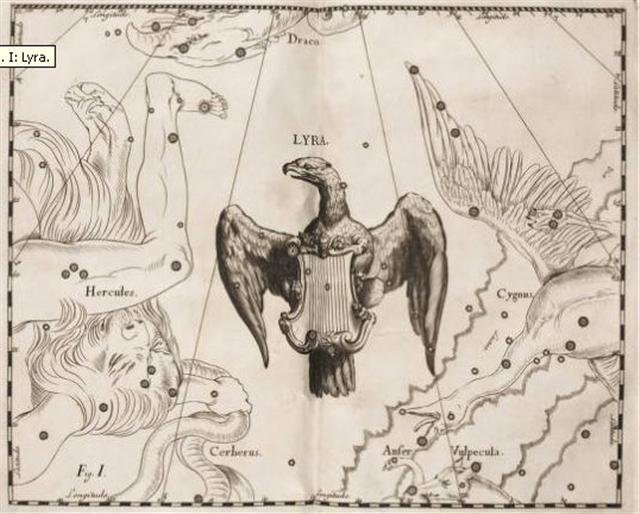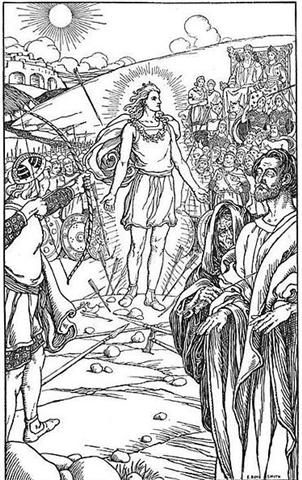394. The position of a
star above (or below) the equator should be rather irrelevant when counting
days. Only for observers far away from the equator would declinations
be of prime importance.
...
This type of fundamental difference in world view will program
minds, and I remember reading that the Chinese kept constructing
their mills with a horizontal axle instead of with a vertical
axle, as the Europeans they were in contact with tried to
pursuade them to do
...
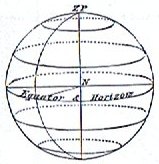 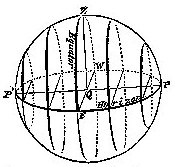
... Apin
means Plough, and I suppose the fields (cfr 1-iku) had to
be plowed at the beginning of the agricultural year - not only
the fields down on earth but also the fields up in the sky. This
hard work should have been facilitated by a pair of
water-buffaloes:

Remarkably, in the
round reconstruction of the Babylonian zodiac a Plough
constellation has been put not where Triangulum (Apin)
can be expected but close to the north pole.

For some reasons
the north pole seems to have been connected with the beginning
of the year. But visualizing the sky roof as a kind of Chinese
Mill (with a horizontal axle instead of a vertical) makes it
easy to understand - also Polaris is close to 02h.
Perhaps one
Plough was close to the north pole and another (Apin)
further down. Maybe this was a sign of the width of the enormous
field the Bull of Heaven (Taurus) had to turn over,
perhaps the whole sky from the tropic of Cancer and up to the
polar circle ...
... I became
curious about this star ... called Nuutuittuq [= 'never
moves'] ... So, on the lee side of our uquutaq (a snow
windbreak) I positioned a harpoon pointing directly at this
particular star to see if it would move. In the morning I
checked it and discovered that the Tukturjuit (Ursa
Major) had changed their position completely but the harpoon
still pointed at this star ... I had discovered the stationary
star ...

Spica was close to the ecliptic plane and Alcor
was high straight above. Thuban was high up above with Hamal close to the
ecliptic. Every living thing had to rise up before tumbling down
again.
... He was moreover
confronted with identifications which no European, that is, no
average rational European, could admit. He felt himself
humiliated, though not disagreeably so, at finding that his
informant regarded fire and water as complementary, and not as
opposites. The rays of light and heat draw the water up, and
also cause it to descend again in the form of rain. That is all
to the good. The movement created by this coming and going is a
good thing. By means of the rays the Nummo draws out, and gives
back the life-force. This movement indeed makes life. The old
man realized that he was now at a critical point. If the
Nazarene did
not understand this
business of coming and going, he would not understand anything
else. He wanted to say that what made life was not so much force
as the movement of forces. He reverted to the idea of a
universal shuttle service. 'The rays drink up the little waters
of the earth, the shallow pools, making them rise, and then
descend again in rain.' Then, leaving aside the question of
water, he summed up his argument: 'To draw up and then return
what one had drawn - that is the life of the world' ...
The beginning of side b on the G tablet was at
α Vulpeculae, at the Tail of the
Eagle, with Sham (the Arrow) arriving 3 days later:
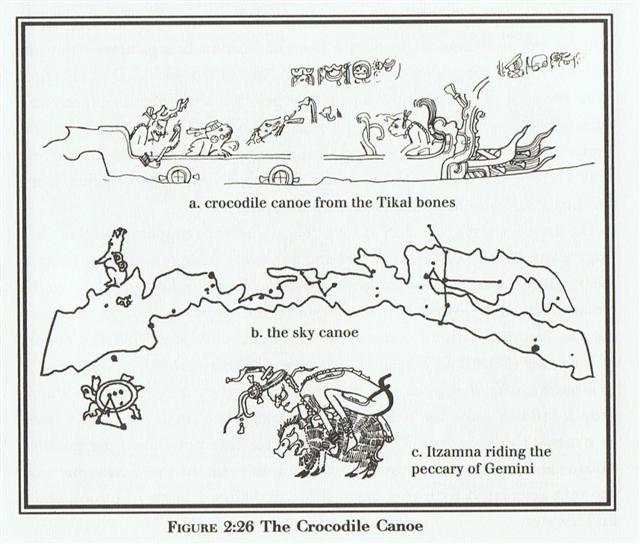
|
10-27 (300 = 379 - 79) |
10-28 |
10-29 (*222) |
|
NOV 11 (315) |
12
(*236 = 8 * 29½) |
13 |
 |
 |
 |
|
Gb1-6 (235) |
Gb1-7 |
Gb1-8 |
|
υ
Aquilae (299.1),
TARAZED (Starstriking Falcon) = γ Aquilae
(299.3), δ Sagittae (299.6), π Aquilae (299.9) |
Sravana-23 (Ear or Three Footprints)
TYL = ε Draconis
(300.0), ζ Sagittae (300.1),
ALTAIR (Flying Eagle) = α Aquilae
(300.3), ο Aquilae (300.5),
BEZEK = η Aquilae (Ant.)
(300.8) |
ι
Sagittarii (301.2),
TEREBELLUM = ω Sagittarii,
ξ Aquilae (301.3),
ALSHAIN (Falcon) = β Aquilae
(301.6), φ Aquilae (301.8) |
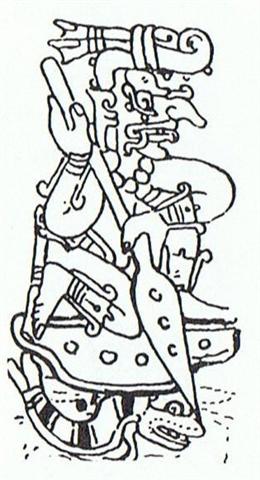 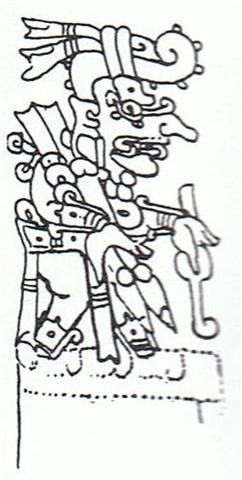 
...
Wakah-Chan (Raised-up-Sky) was at the
opposite side of the sky compared to the place
of Creation, and the latter place was referring
to a region not far from Canopus. The
Raised-up-Sky was a region close to Aquila,
which seems reasonable because according to the
Babylonians the Milky Way was upraised from the
place of the Cargo Boat (the Tea Pot, the
South Dipper) beyond which the Eagle & Dead
Man were following the Milky Way across the
sky ...

...
Men's spirits were thought to dwell in the Milky
Way between incarnations. This conception has
been handed down as an Orphic and Pythagorean
tradition fitting into the frame of the
migration of the soul. Macrobius, who has
provided the broadest report on the matter, has
it that souls ascend by way of Capricorn, and
then, in order to be reborn, descend again
through the 'Gate of Cancer'. Macrobius talks of
signs; the constellations rising at the
solstices in his time (and still in ours) were
Gemini and Sagittarius: the 'Gate of Cancer'
means Gemini. In fact, he states explicitly
(I,12.5) that this 'Gate' is 'where the Zodiac
and the Milky Way intersect'. Far away, the
Mangaians of old (Austral Islands, Polynesia),
who kept the precessional clock running instead
of switching over to 'signs', claim that only at
the evening of the solstitial days can spirits
enter heaven, the inhabitants of the northern
parts of the island at one solstice, the
dwellers in the south at the other
... Considering the fact that the crossroads of
ecliptic and Galaxy are crisis-resistant, that
is, not concerned with the Precession, the
reader may want to know why the Mangaians
thought they could go to heaven only on the two
solstitial days. Because, in order to 'change
trains' comfortably, the constellations that
serve as 'gates' to the Milky Way must 'stand'
upon the 'earth', meaning that they must rise
heliacally either at the equinoxes or at the
solstices. The Galaxy is a very broad highway,
but even so there must have been some bitter
millenia when neither gate was directly
available any longer, the one hanging in midair,
the other having turned into a
submarine entrance ... |
|
Jan
14 (79 + 300) |
15
(*300) |
16
(*222 + *79) |
... The Arabs
in the desert regarded it as a test of penetrating vision;
and they were accustomed to oppose 'Suhel' to 'Suha'
(Canopus to Alcor) as occupying respectively the highest and
lowest posts in the celestial family. So that Vidit
Alcor, et non lunam plenum, came to be a proverbial
description of one keenly alive to trifles, but dull of
apprehension for broad facts
...
The beginning of side a was also connected
with a Fox, viz. at the Full Moon. 230 (Gb1-1) - 123
(compressed henua calendar) = 107 (= 1½ * 314 - 364).
|
CLOSE TO
THE SUN: |
|
3-6 (65 = 80 - 15 → *350) |
3-7 |
3-8 (432 = 447 - 15) |
|
0h (445 - 80 = *365) |
MARCH 22 (*1) |
23 (82) |
|
no glyph |
 |
 |
|
Ga1-1 |
Ga1-2 |
|
HYADUM II = δ¹ Tauri
(64.2) |
Net-19 (Crow)
AIN (Eye) =
ε
Tauri,
θ¹ Tauri, θ² Tauri (65.7) |
no star listed (66) |
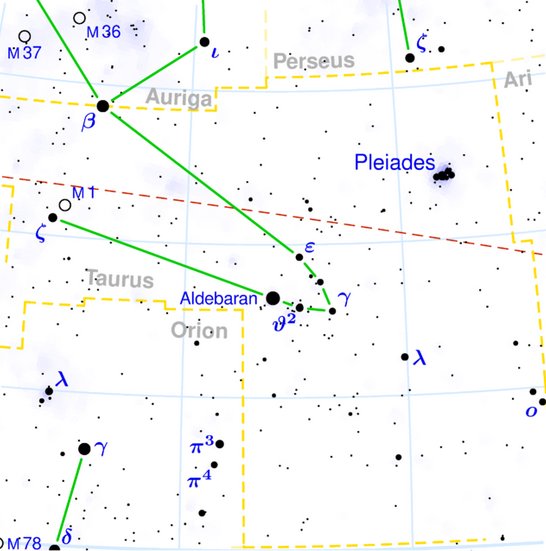
... There was no water in the village. The
lakes and rivers were dry. Raven and Crow,
two young girls who were having their first
menstrual courses, were told to go and draw
water from the ocean. Finding the journey
too long, Raven decided just to urinate into
her basket-bucket. She decieved no one and
was severly scolded. Crow returned much
later but with drinking water. As a
punishment, Raven was condemned never to
find water in the summer; only in winter
would she find something to drink. For that
reason the Raven never drinks during the hot
months; she speaks with a raucous voice
because of her dry throat ... |
|
May 24 |
25 (145 = 290 /
2) |
26 (*66) |
|
°May 20 |
21 (*61 = 161 - 100) |
22 (142) |
|
'April 27 |
28 (118 = 4 * 29½) |
29 (*39) |
|
"April 13 |
14 (104 = 8 * 13) |
15 (*25) |
|
CLOSE TO
THE FULL MOON: |
|
9-5 (*168 = 336 / 2) |
9-6 (249) |
9-7 (250) |
|
SEPT 20 (*183 = 366 / 2) |
21 (264) |
EQUINOX |
|
Heart-5 (Fox)
σ
SCORPII
(247.0),
HEJIAN
=
γ
Herculis (247.2),
ψ
Ophiuchi (247.7)
|
ρ
Ophiuchi (248.1),
KAJAM (Club) =
ω
Herculis
(248.3),
χ
Ophiuchi (248.5),
SHE LOW (Market Tower) =
υ
Ophiuchi,
Tr.
Austr. (248.7), ζ Tr. Austr. (248.8) |
Al Kalb-16 (The Heart) /
Jyeshtha-18 (Eldest) /
ANA-MUA-1 (Entrance pillar)
ANTARES = α Scorpii
(249.1),
MARFIK (Elbow) = λ Ophiuchi,
φ Ophiuchi (249.5), ω Ophiuchi (249.8) |

... In the inscriptions of Dendera,
published by Dümichen, the goddess Hathor
is called 'lady of every joy'. For once,
Dümichen adds: Literally ... 'the lady of
every heart circuit'. This is not to say
that the Egyptians had discovered the
circulation of the blood. But the
determinative sign for 'heart' often figures
as the plumb bob at the end of a plumb line
coming from a well-known astronomical or
surveying device, the merkhet.
Evidently, 'heart' is something very
specific, as it were the 'center of gravity'
... See Aeg.Wb. 2, pp. 55f. for sign of the
heart (ib) as expressing generally
'the middle, the center'.
And this may lead in quite another
direction. The Arabs preserved a name for
Canopus - besides calling the star Kalb
at-tai-man ('heart of the south') ...
Suhail el-wezn, 'Canopus Ponderosus',
the heavy-weighing Canopus, a name promptly
declared meaningless by the
experts, but which could well have belonged
to an archaic system in which Canopus was
the weight at the end of the plumb line, as
befitted its important position as a heavy
star at the South Pole of the 'waters
below'. Here is a chain of inferences which
might or might not be valid, but it is
allowable to test it, and no inference at
all would come from the 'lady of every joy'.
The line seems to state that Hathor
(= Hat Hor, 'House of Horus')
'rules' the revolution of a specific
celestial body - whether or not Canopus is
alluded to - or, if we can trust the
translation 'every', the revolution of all
celestial bodies. As concerns the identity
of the ruling lady, the greater possibility
speaks for Sirius, but Venus cannot be
excluded; in Mexico, too, Venus is called
'heart of the earth'. The reader is invited
to imagine for himself what many thousands
of such pseudo-primitive or poetic
interpretations must lead to: a disfigured
interpretation of Egyptian intellectual life
... |
|
Nov 23 (327) |
24 |
25 (*249) |
|
°Nov 19 |
20 (*244) |
21 (325) |
|
'Oct 27 (300) |
28 |
29 (*222) |
|
"Oct 13 (286) |
14 |
Tangaroa Uri 15 (*208) |
|
... The canoes of Ava Rei Pua and of
Hotu were seen near the (off-shore)
islets. On the fifteenth day of the month of
October (tangaroa uri) the
canoe of Hotu and the canoe of Ava
Rei Pua landed. On the fifteenth day of
the month of October (tangaroa uri),
Nonoma left the house during the
night to urinate outside. At this point
Ira called out to Nonoma, 'Look
at the
canoe!' Nonoma ran, he quickly went
to Te Hikinga Heru (a ravine in the
side of the crater Rano Kau) and
looked around. There he saw the double canoe
way out near the (offshore) islets, and the
two (hulls of the canoe) were lashed
together. He ran and returned to the front
of the house. He arrived and called into the
house: 'Hey you! This canoe has arrived
during the night without our noticing it!'
Ira asked Nonoma, 'Where is
the canoe, which you say is lying out there
(in the water)?' Nonoma's voice came
back: 'It is out there (in the water) close
to the (offshore) islets! There it lies, and
the two (hulls) are lashed together.' The
four of them (corrected for 'the six of
them') went out and picked up leaves (on
branches) to give signals. They picked them
up, went and arrived at Te Hikinga
and saw the canoe. Raparenga got up,
picked up the leaves, took them in his
hands, and waved, waved, waved, waved ...
(E:75) |

|










